Judging from the number of emails Miriam and I received from reporters today, the general public wants to hear what we have to say about the project a lot more than the Ocean Cleanup does. But with the new media blitz that is going on, I admit I checked out the prototype that the Ocean Cleanup just deployed in the North Sea. I have to say that I am glad they are testing a smaller prototype before deploying the largest structure in the ocean, but I also have a lot of questions. At the risk of being called some kind of ocean-progress luddite for the umpteenth time on the internet, I am going ask them here. Hell, I might even put on my ocean-old-lady cranky pants and ask them in ALL CAPS. BECAUSE I CAN. But seriously, projects can only get better and succeed if they answer criticism so I hope the Ocean Cleanup can answer them!
Why are they using RO-BOOM oil booms?
Andrew Thaler over at Southern Fried Science pointed this out. RO-BOOMS are commercially available oil containment spill booms that have been around at least since 1988. I would assume that something is known about their durability?
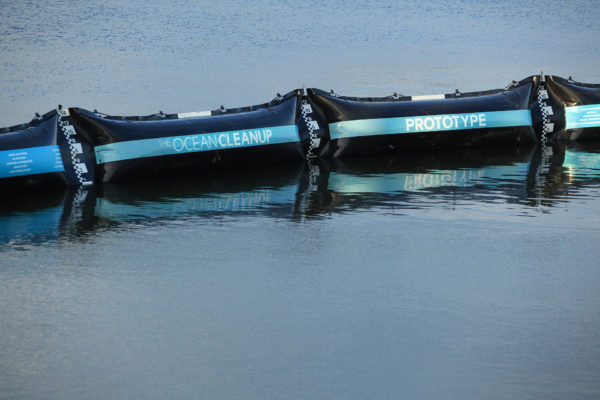
Yup, definitely a RO-BOOM.
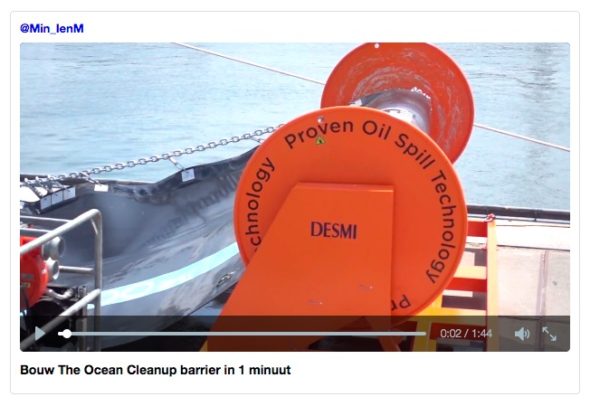
Excuse my language, BUT WHY THE F** ARE THEY BLACK?
You just spent all this money to add a custom paint job to a floating advertisement potential maritime hazard and it’s one of the least visible colors at sea. I CAN’T EVEN.
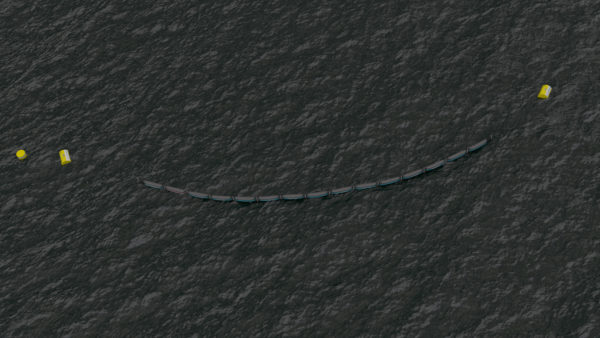
Where are the booms?
There’s gotta be a notice to mariner’s out there somewhere. In case you don’t know what this is, it’s a public announcement that you have to put out when ever you deploy anything at sea. So people don’t run over it or anything cause it’s camouflaged.
Are these the booms the 1 km deployment planned for Japan will use?
ARE THEY? I NEEDS TO KNOW. They look a lot different from the booms that were tested at the Marin Facility. 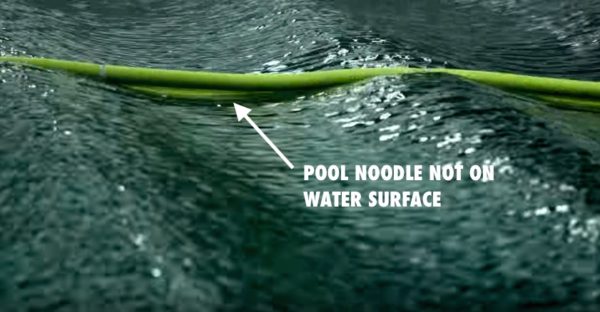
which also seems to be different than what was tested at the Deltares facility.
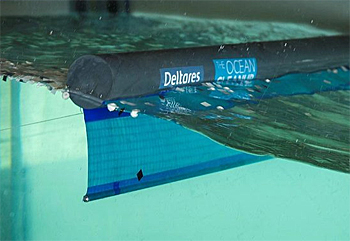
Do the maybe intended booms actually collect plastic?
No seriously, there seems to have been a lot of effort to test the structural stability, but no testing whether they actually collect plastic and debris. I would have liked to see them drag the barrier around a bit just to see before deploying a big and expensive mooring if it is indeed the one they are going to use. As the Feasibility study indicated, sometimes the barriers can’t collect plastic so it would be useful to know when this is.
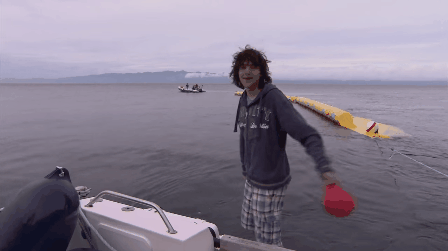
How did they get funding EUR 0.5 Million from the Dutch Government?
Is there a public proposal? It would be great to see, especially since this is now a publicly funded project and it would be great resource for reporters interested in the project (instead of them asking Miriam and I to constantly peer review it…grumble grumble).
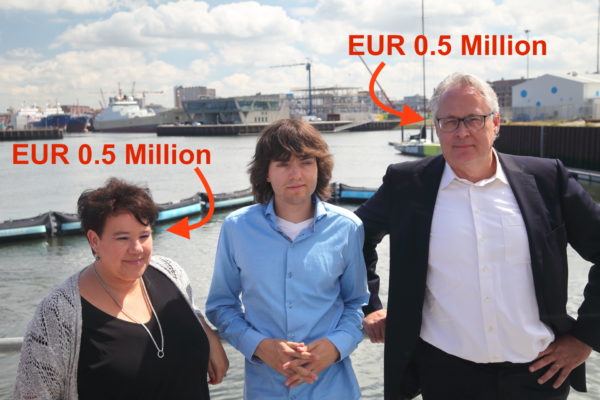
That’s all I got for now. Any more questions you can ask Andrew Thaler at Southern Fried Science who also has questions.
Share the post "The Ocean Cleanup deployed a prototype and I honestly have A LOT of questions"

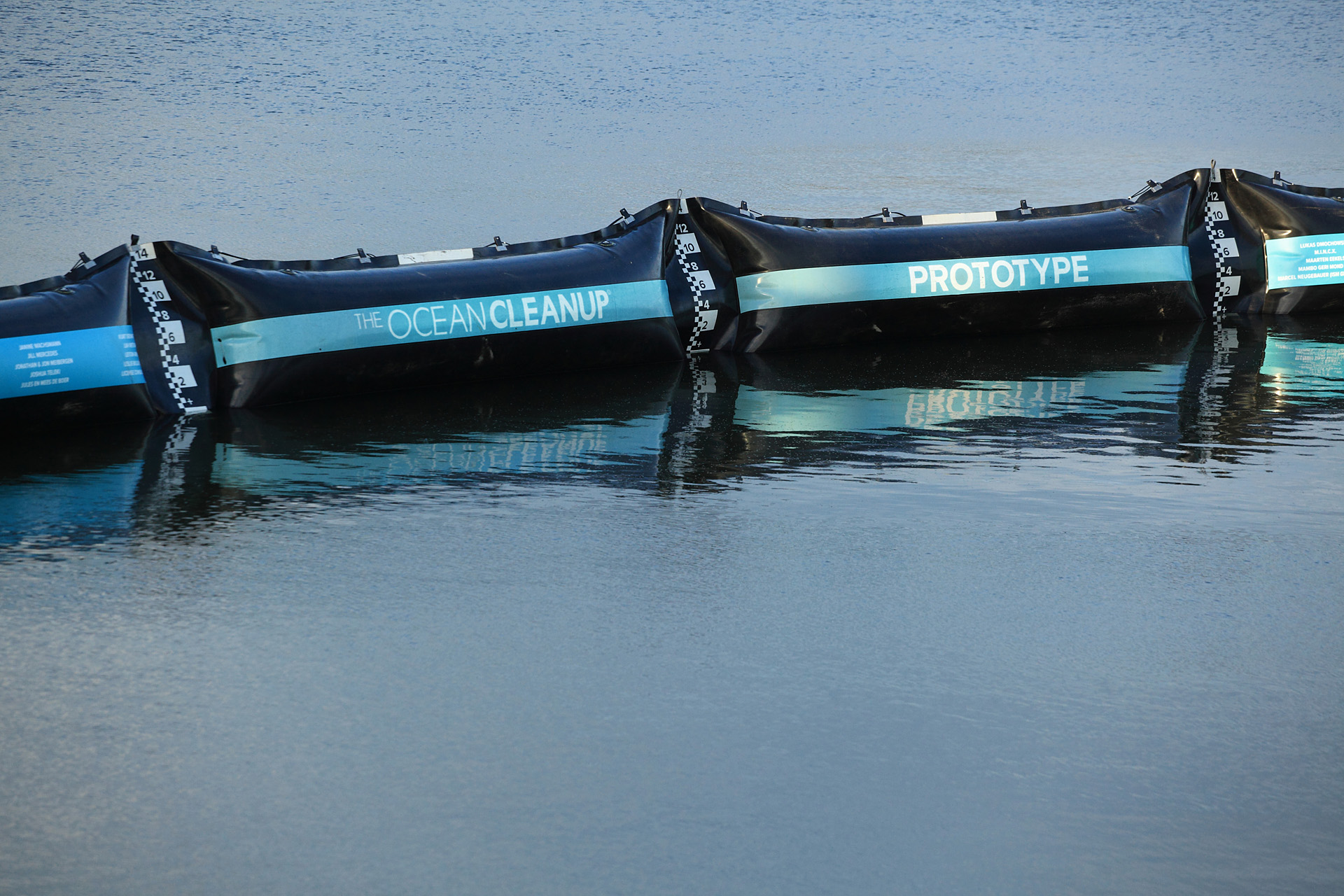
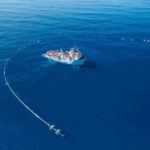
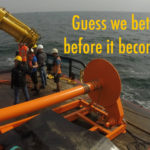


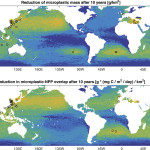
“Asking…I”?
Here are a few more:
– What’s the duration of deployment? What’s the frequency of removing the collected debris, and what’s the plan for disposing of it? If these things are meant to remain deployed during storms, it’s only a matter of time before they get destroyed and become debris also, and release whatever they’ve collected. (Which isn’t terrible if they have plans and the means to recover the equipment.) The marine environment is incredibly tough on hardware and necessitates regular maintenance.
– There will be interesting conflicts of interest. The floating mats of collected plastic will become a FAD (fish aggregating device), where juveniles of various species collect for refuge and larger fish collect to feed on them; and larger fish collect to feed on them; and larger fish…. FADs are illegal in lots of places because they allow for ultra-efficient targeting of climax species. Will fishing be allowed in the area?
Although the idea has always struck me as half-baked, I’m supportive of any effort to tackle the problem. Some of these questions probably have answers, I just haven’t seen them.
Ummm, another thing I hadn’t brought up before which seems especially important to forage fish fisheries(very popular in North Sea): what happens when they collect, trap, damage etc an entire spawn of sardines or other pelagic forage fish??? Aren’t these eggs and larvae concentrated in the upper 1m? Since we use surface Neuston tows to survey their populations? Another potential impact.
I am so glad that people are asking these questions. Two years ago I wrote this piece questioning his ideas and the realistic aspects of this project as a response to 100’s of people who essentially believed that my desires to go to the ocean and clean plastic were no longer needed because of this concept. Thank you for bringing light and reality to the subject. My post from April 2014 is located here. https://cuttheplastic.wordpress.com/2014/04/27/boyan-slat-has-a-great-idea-but-i-dont-believe-his-claims-are-realistic/
Dr. Martini, what have you done that has worked better to clean up the oceans? Taking a bunch of tests and measurements doesn’t actually clean anything right? Of course there are problems with any prototype but your sour grapes are not constructive. Why can’t you help and encourage the boy instead of jealous raging with your wine and cats?
*cough cough* THERANOS *cough cough* http://arstechnica.com/science/2016/04/theranos-blood-tests-often-wildly-wrong-and-may-be-shut-down-by-feds/
Clearly you are NOT a scientist or engineer. Asking questions such as HOW CAN THIS FAIL is exactly how these fields move forward.
Here’s a list of other ways that I compiled that can help reduce the amount of plastic that goes in the ocean.
https://www.deepseanews.com/2014/07/the-ocean-cleanup-part-1-alternatives-to-reduce-ocean-plastic/
In light of the proposed scope of the project, I think these are all fair questions. If the Ocean Cleanup can answer them they could also improve the project and mitigate potential collateral damage.
The oil booms that were just deployed are too short to affect this, however the booms proposed for Japan and the Pacific are not.
So it seems the oil booms as currently deployed will collect only large floating objects?
Are you a real person?
Hey Kim, thanks for your questions!
Always happy to see people thinking along with us, indeed it helps keeping the team sharp which brings us forward.
As to your questions:
“Are you using Ro-Booms?”
The prototype we deployed two weeks ago is developed in conjunction with DESMI, who are indeed also a manufacturer of proven oil spill response equipment. It’d have been great if we could have used off-the-shelf equipment (it would have saved our engineers a lot of time), but unfortunately that option wouldn’t have been able to cope with the loads (80MT for the prototype), and also those booms aren’t designed for permanent deployment. On the plus side, we were able to build on their decades of experience when it comes to rubber composition, hinges, etc. but still air chambers, the load-carrying ‘undercarriage’, the electronics and bridles etc had to be engineered from scratch. Note the transportation drum is in fact a refurbished oil boom drum, hence the text.
“why are they black?”
The black colour ensures the highest UV stability for the type of synthetic rubber used. The barrier is fitted with reflective strips to improve visibility. Note that the prototype deployment site itself is marked with 4 cardinal marking buoys, and is a no-go area for non-authorized vessels.
“Have they issued a notice to mariners?”
Certainly, the Dutch government is a close collaborator to the prototype project. The Notice to Mariners can be found here: https://www.defensie.nl/binaries/defensie/verzamelingen/berichten-aan-zeevarenden/2016/19/wkly-y2016-w19-baz180-191.pdf (page 8)
“Are these the booms that will be used in Japan? The design is different every time”
The design of the barriers continues to change over time, which is inherit to the iterative nature of the project. We test to learn, to then be able to improve the design, etc etc. So we cannot guarantee the barriers in future projects will look exactly like the one we have in the North Sea right now, but the lessons we gather from this testing will result in the design used for the next iteration(s). Note that the tests at Deltares and MARIN were hydrodynamic tests, and didn’t require the level of design detail that is required for real offshore deployments.
Side note on the still taken from the MARIN video: what you see there is, as you correctly imply, behaviour we don’t want to see with our system. However, the test case we are looking at in that video is actually of the highest pre-tension we tested during that test campaign, simulating a tension that is way higher that we will realistically encounter in the Pacific. Also note that MARIN was a very conservative setting, since it’s hard to properly scale down stiffness because it scales with the 4th power. And higher stiffness means less favourable behaviour in our case. In realistic cases, the barrier performed nominally. The MARIN report can be downloaded on our website.
“Will you also be doing plastic capture efficiency tests?”
Yes
“How did they get funding EUR 0.5 Million from the Dutch Government?”
We applied for an ‘innovation subsidy’ through the regular channels of the Ministry of Infrastructure and Environment and the Ministry of Economic Affairs. I don’t know whether the documents related to this subsidy are online.
Hope this helps and please don’t hesitate to contact us in case any more questions pop up!
Yours
Boyan
Thanks for taking the time to answer!
Although I admit, after listening to the mooring vandalism horror stories at work recently, the phrase “no-go area for non-authorized vessels” made me chuckle/weep.
Boyan, your project still seems to completely ignore any potential impact to marine life. Why won’t you address this problem?
What are the result of the test so far?
Is it possible to make floats with the plastic?
Is it possible in a floating factory on the spot (so no logistic losses needed)?
Do you think the sea steading idea can be combined with this idea?
Could it employ fishermen that have lost their jobs? How many jobs can be created with this idea?
Dr. Martini:
While I have no doubt that you are well -respected in your field, like many scientists, your communication and PR skills with the general public could use a little work.
Do you frequently use the F bomb in your peer-reviewed scientific papers?
Being harsh, sarcastic and dismissive of others is not going to win you much appeal with the general public–if in fact, that is who you’re trying to win over.
Fair enough, that’s your opinion. The internet is big enough all kinds of writing styles, and what may not resonate with you, may click with others. Science communication is not one-sized fits all and I’ll respectfully continue writing in my voice.
Fair enough. See you out there (on the Internet). I do appreciate the scientific concerns you’ve raised as well as the work you and your colleagues do.